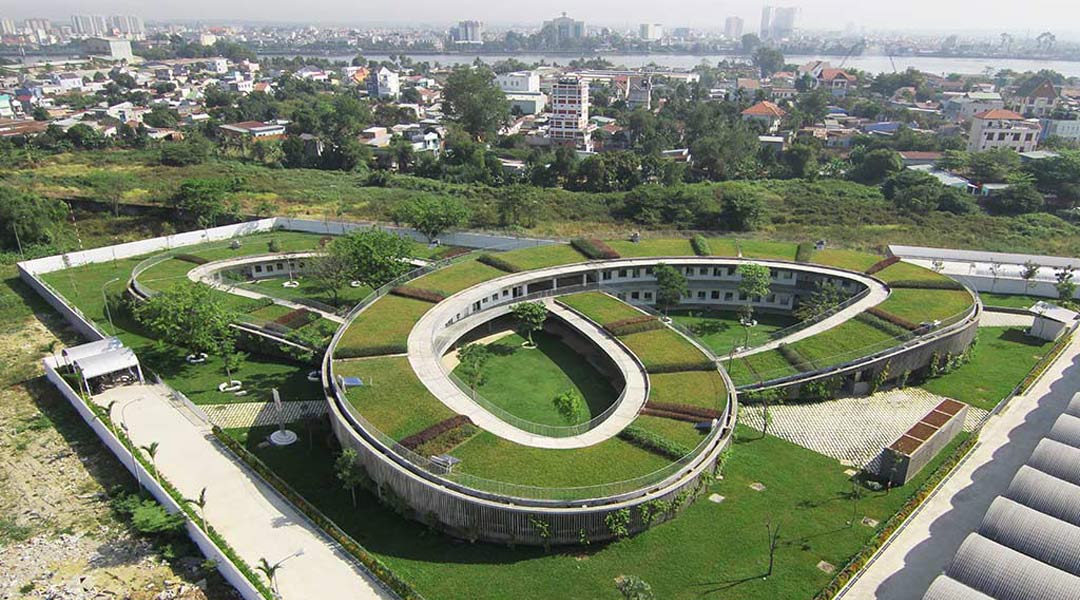
Plants in architecture improve cities, says Vo Trong Nghia partner
There’s a unmistakable ‘green’ philosophy running through the works of VTN Architects (Vo Trong Nghia Architects) which extends far beyond including greenery as an element to furnish their architecture. As Takashi Niwa, the Japanese partner at VTN Architects, explained during his talk at Anthology Festival 2018, using plants and trees as building materials in their architecture gives users an opportunity to reconnect with nature in our increasingly developed urban conditions.
Moreover, from their analysis of the prolific number of projects they have built in Vietnam reveals that greenery significantly reduces the heat gain of a building, encourages users to promote natural ventilation by opening windows to greenery, and minimizes the reliance on air-conditioning.
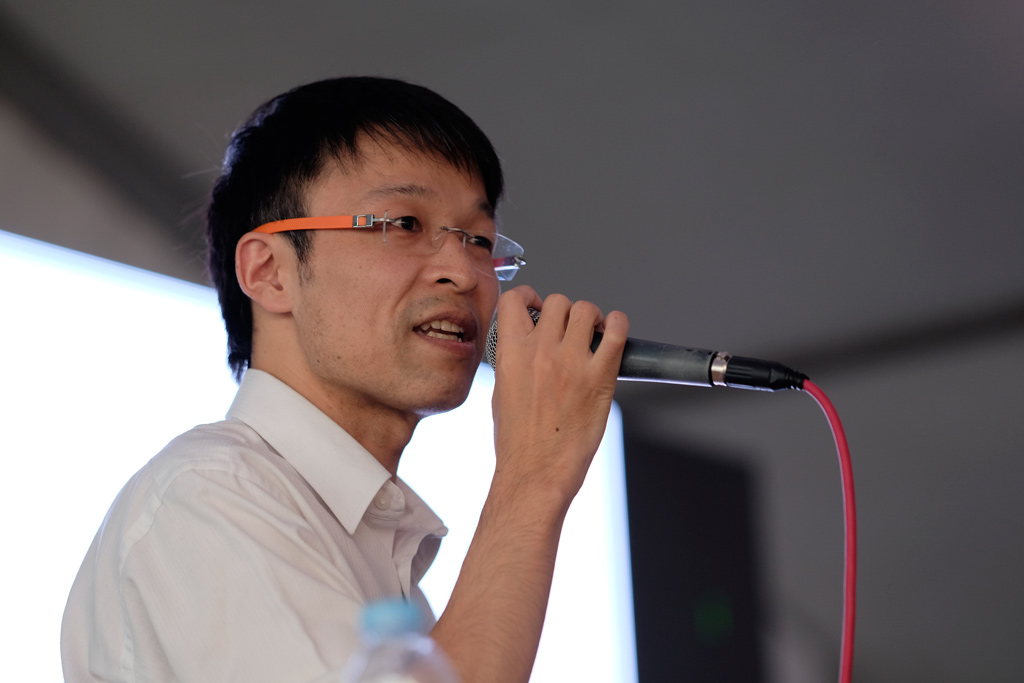
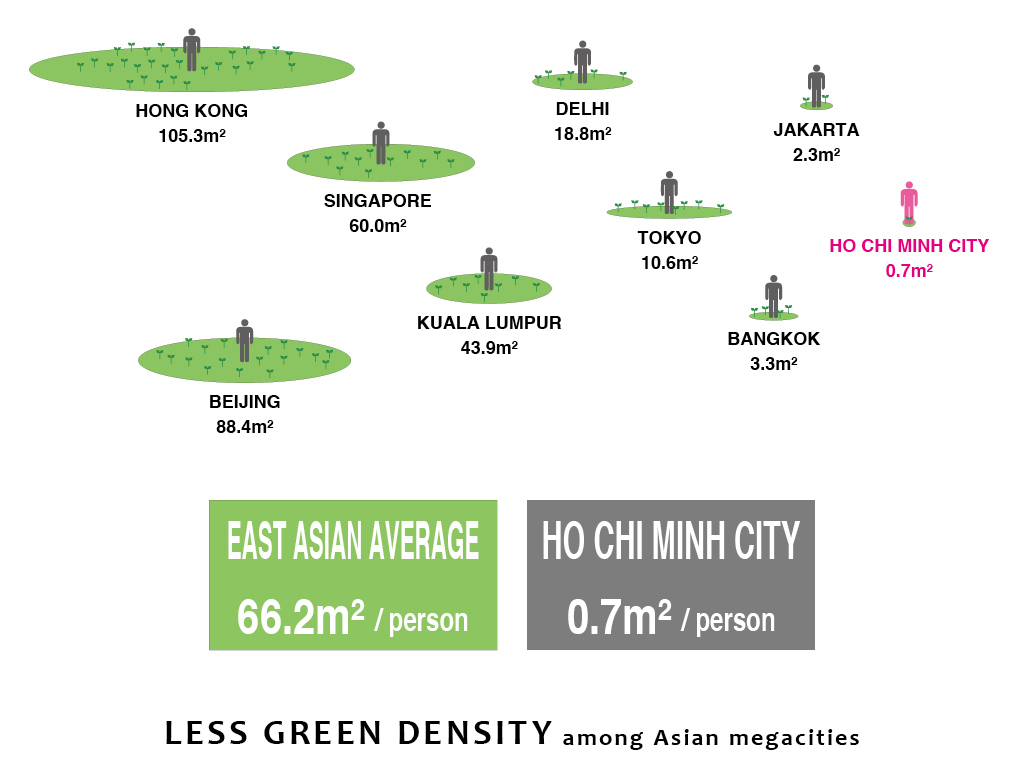
VTN Architects’ approach to architecture is as much a response to ubiquitous demand for urban development based on the economic market, and the energy consumption associated with the human desire for private modes of transport, as it is with creating oases within a project’s immediate context. After presenting this philosophy through a series of houses, educational institutions, and hospitality projects, Niwa sat down with BluPrint to explain the numerous benefits of greenery in designing architecture for the tropical climate.
BluPrint: Mr. Takashi Niwa from Vo Trong Nghia Architects—a pleasure to meet you. Is this your first time in Manila?
Takashi Niwa: Hello. Yes, this is my first time.
When you went around on tour of Manila what was your impression of the city?
The first impression is that I like the city. I realized that there is the same tropical climate, the same sort of climate as Ho Chi Minh City for trees to grow. The height of the trees are maybe half as high as in Hanoi because of typhoons, but the species is similar to what we have in Vietnam. So I really see that Manila or the Philippines can benefit from plants very much.
And also the interesting thing, when I passed by the CCP, is that people were enjoying walking and exercising in front of the building. I realized that this common space is very open to the public. The people can use it as they want, so the city has a very big potential for architecture to be socially open. I feel that architecture can be very close to people in Manila. I feel that there is much potential for architectural design in this type of scenario.
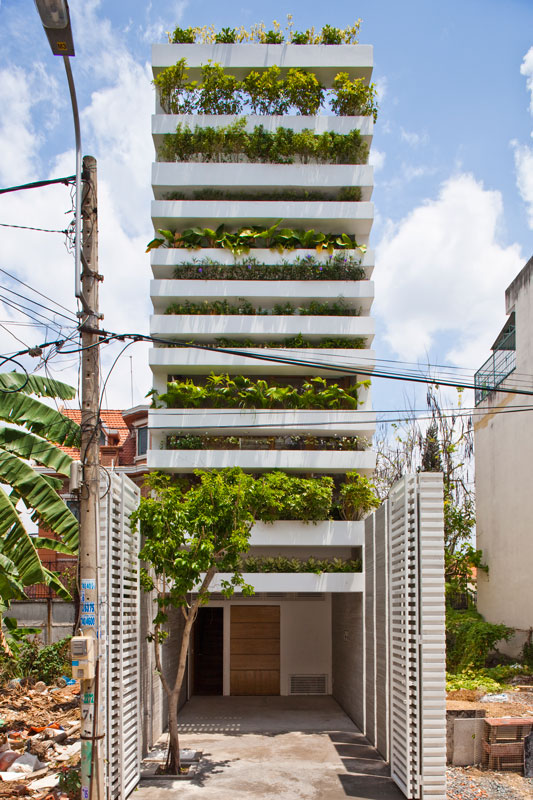
[one_half_last padding=”0 0px 20px 0px”]
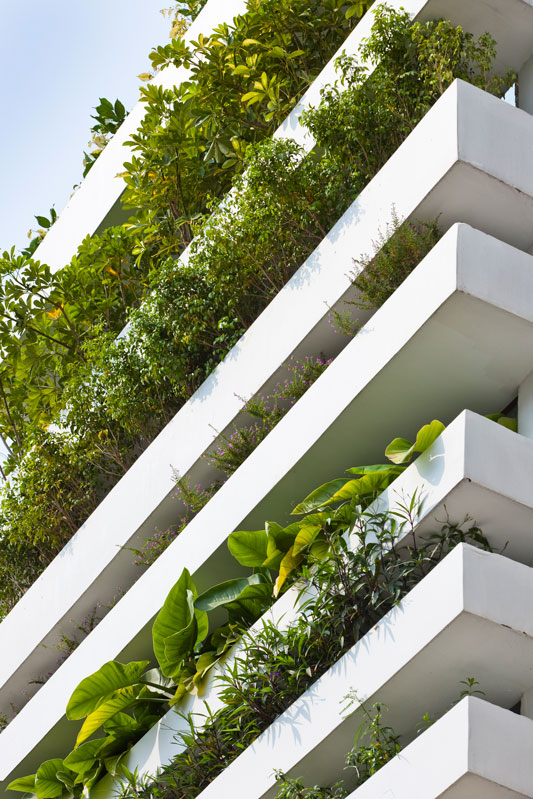
The focus of your talk at Anthology Festival was the power of plants in architecture. Did the interest in plants begin when you were working in Japan or did it begin when you arrived in Vietnam?
Before I tried using plants in Vietnam, I thought that the tree was just another part of the landscape, and I also thought that in design, the building space was the main part. But after I came to Vietnam I realized that the tree is more powerful and that everyone loves trees. Even in a small space, in Vietnam, for example, people put a bonsai tree on the balcony. Unfortunately, those buildings were not designed for the placement of such trees. So the interior space and the bonsai outside were very separate.
Then, when we tried designing green buildings with plants, people realized, and we realized also, how greenery could bring more happiness to people. We connect with their habits to put greenery on the building and then together with the building design. Also, people naturally know how to protect the heat gained from sunlight using greenery. They like to sit down under a tree to drink coffee, and also they put trees on the roof. They have a basic understanding of these principles.
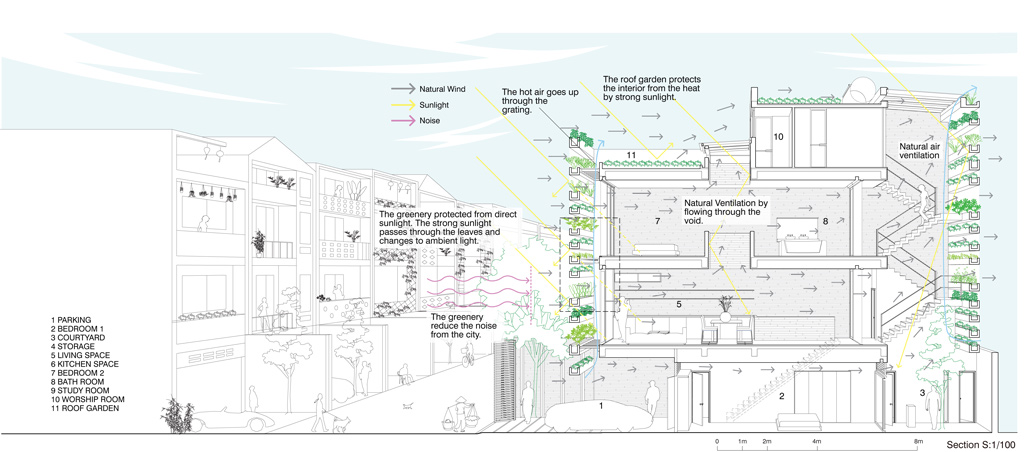
It’s very easy to adapt our design approach to Vietnamese culture. I realized that greenery has more power to reconnect the people to the environment. Once we have greenery outside of the window, people often cut and prune them. They naturally open the window because the leaves are moving, and they know that the wind is moving outside. If they don’t have greenery, they don’t open the curtain. They will feel strong sunlight coming in and use the air-conditioner instead. But if there’s greenery, they open the window. It really is quite powerful and naturally people feel comfortable. Greenery helps people connect with the environment. We are very happy to discover this through projects.
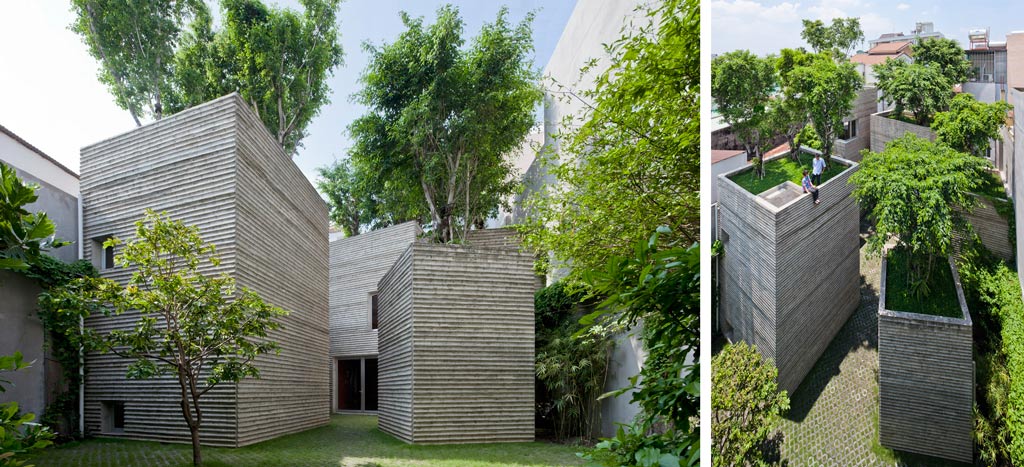
And also for the tropical climate, we can use tree plants as a building material. I presented a hotel project the other day, in Milan…when I presented this building, one of the jury, who was an Italian guy, asked me, “If you use so much greenery what can architects do for the design?” I replied to them that because of the tropical climate, we could use greenery as a building material, the same as how you use bricks, or how you use metal panels—we can use greenery as a material. So it is for the benefit of, and an advantage of the tropical climate. The native plants you get in Europe take a long time to grow. It costs a lot of money to control the aesthetics and also you have to consider the four seasons. We can find another approach to the tropical climate. This is my understanding for our projects.
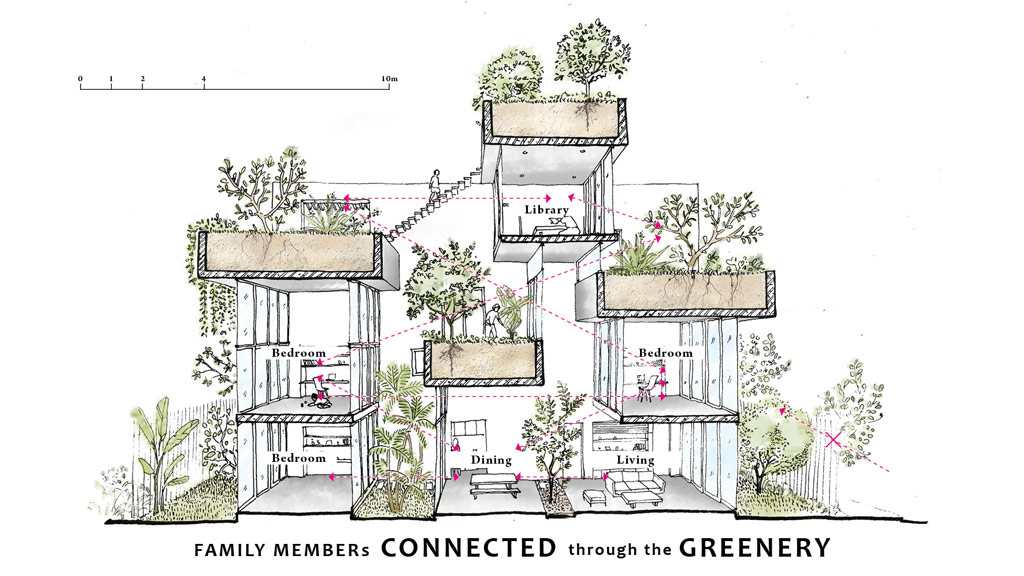
These natural elements—plants, soil, trees—are usually associated with landscape architecture. You’re an architect so how did you manage to get the expertise needed? Did you have to collaborate with a landscape architect or is your experience more in landscape design? How did you develop that approach from an architectural point of view?
Because we are architects we know how trees will be suitable for our design. There aren’t many specialists for landscape design because Vietnam’s urban environment looks ugly, So once we try to incorporate a landscape designer, this means the gardener! They don’t know what modern design is or our ideas to realize this. It’s really difficult to communicate this. We choose greenery, then we discuss with the gardener how to decide what plants to use…then we can realize a good idea without them. Through our projects, we’ve tried several plants. We also consider what we usually see around the site—what kind of tree is suitable, easy to maintain, and can adapt to the soil.
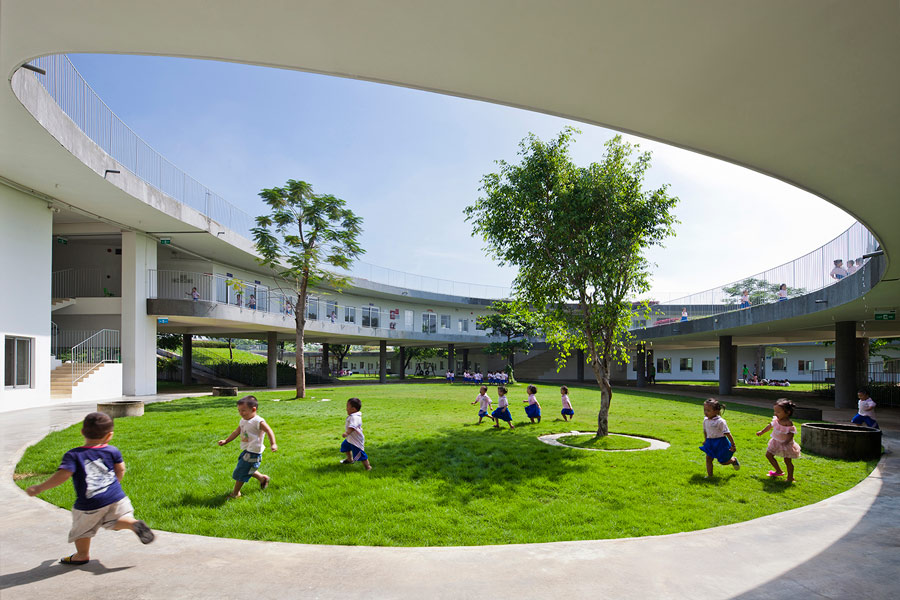
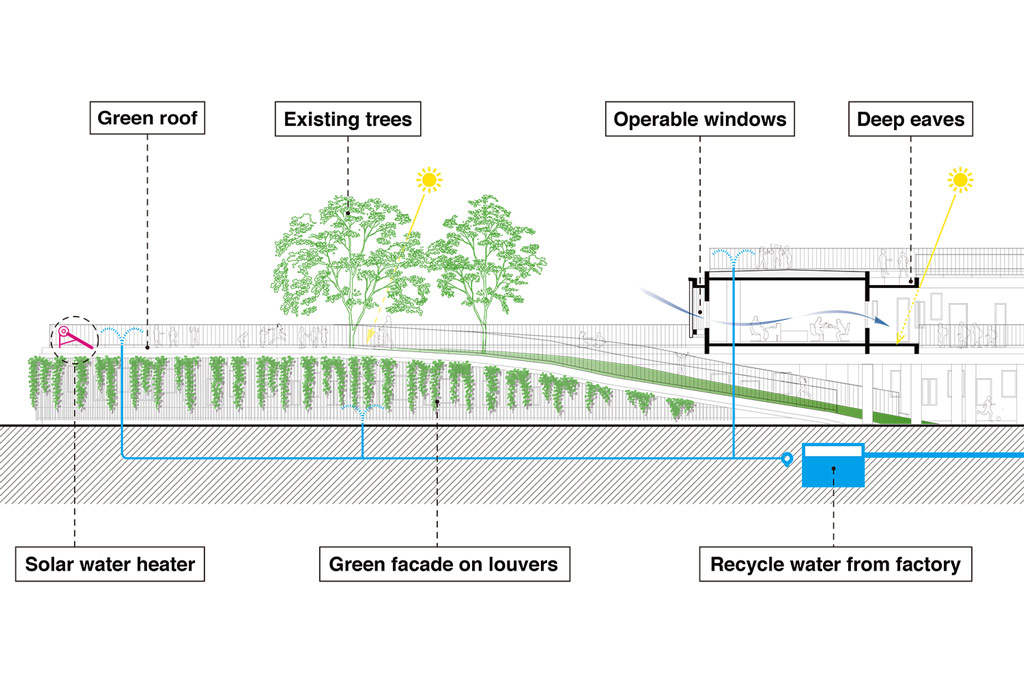
You presented quite a number of projects and slowly you could see the scale increasing with every project. So with this plant architecture, what are the challenges in maintaining the quality of greenery when you start to expand to a larger scale—from the domestic, house scale to the institutional, educational or hotel scale?
Due to the scale of greenery, it is different with the common scale and the house scale. At the house scale, the homeowner directly maintains the greenery. After many projects, we realized that bigger trees are more beneficial for the residence and the common building because we can reduce the maintenance time to maybe once or twice a year, to cut the unnecessary branches. Everyday pruning is enough. For small-scale plants, however, we need to maintain frequently because of the tropical climate. For small plants, we usually like to grow vegetables because they’re easy to take care of, as you will eat them. Naturally, homeowners will maintain these kinds of plants. But a big tree only needs to be maintained several times per year. So this can make a good balance.
For social buildings, the common buildings, we mainly use big trees for easy maintenance. Also, we expect that the trees will get stronger and stronger every year and then we can assess 20 years later. We hope that 100 years later that the original greenery is still there. It’s okay that the trees become stronger than our architecture. This is also not a problem because we want to create a very good atmosphere and environment for people. So we just create the foundation to make a nice place for living.
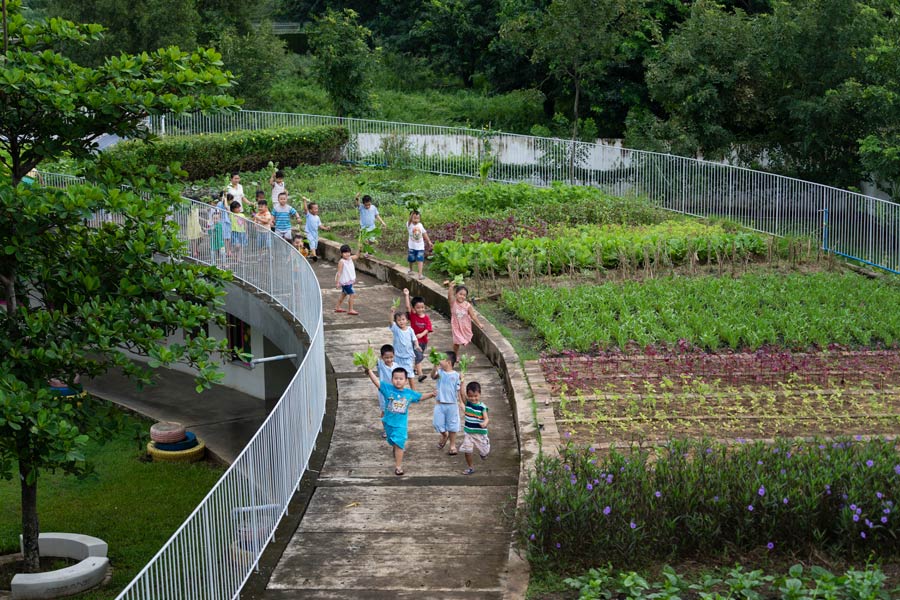
When your clients are working with you, they have to try to imagine what the plants will look like in one year’s time, two year’s time. Do they get surprised at how much the plants grow and how it adds value to the architecture? What kind of reaction do you get from clients or users?
Recently we had a client who likes greenery. From the beginning, they had some idea for greening the building. Through the project, we realized their idea and a good design, and to incorporate these together. They were surprised after the project especially the way it made them feel, because sometimes we use plants with a scent—with flowers, and also fruits. They were surprised not only because of the visual connection but also…
The feeling of well-being.
Because Vietnamese people do feng shui. Some trees are good for feng shui. Feng shui is like living mathematics—getting the result from the experience. So, some plants are good for feng shui, good for feeling refreshed, and good for avoiding mosquitos. We consider the tradition of feng shui with trees also. Some trees like the pomelo tree or the grapefruit tree produce a smell from the fruit and its flowers. Naturally, people sense the seasons from the blooming flowers or fruits. It’s quite easy to enjoy, you can eat the fruits afterward. ![]()


